A rookie Hall of Fame voter explains his process
Before the New Year arrived, I filled out a Hall of Fame ballot for the first time.
To be eligible to vote, one must be a member of the Baseball Writers' Association of America for 10 years. Is it a perfect process for recognizing who are the greatest players to step on the field? No. But I've argued it's better than many of the alternatives, and it's a voting electorate that is evolving.
Voters are tasked with answering one simple yet surprisingly complex and controversial question: Who is worthy of the Hall of Fame?
There is only one constraint: You can only select a maximum of 10 players.
Reaching Hall of Fame status means different things to different voters. Each has their own criteria and process.
I want to share the process I used to arrive at my selections. It will explain why I voted for some players over others. I figure I owe transparency to the players on the ballot and to fans who care about the Hall of Fame. Reasonable voters can disagree on some candidates, but we all ought to have a process and guardrails to protect us from the pitfalls of bias.
My first HoF ballot, @NotMrTibbs pic.twitter.com/sh96EBzmaX
— Travis Sawchik (@Travis_Sawchik) December 29, 2022
When asking who is Hall of Fame worthy, I believe we ought to begin by evaluating who already occupies the Hall.
Precedent and trends
Of the 17,610 major-league players to debut between 1871-1999, only 1.5% reached Cooperstown, New York.
And of those 269 players enshrined, only about half, 135, were elected by the writers; the others were elected by various committees. As a group, writers have kept the Hall extremely exclusive. I respect that 1.5% precedent.
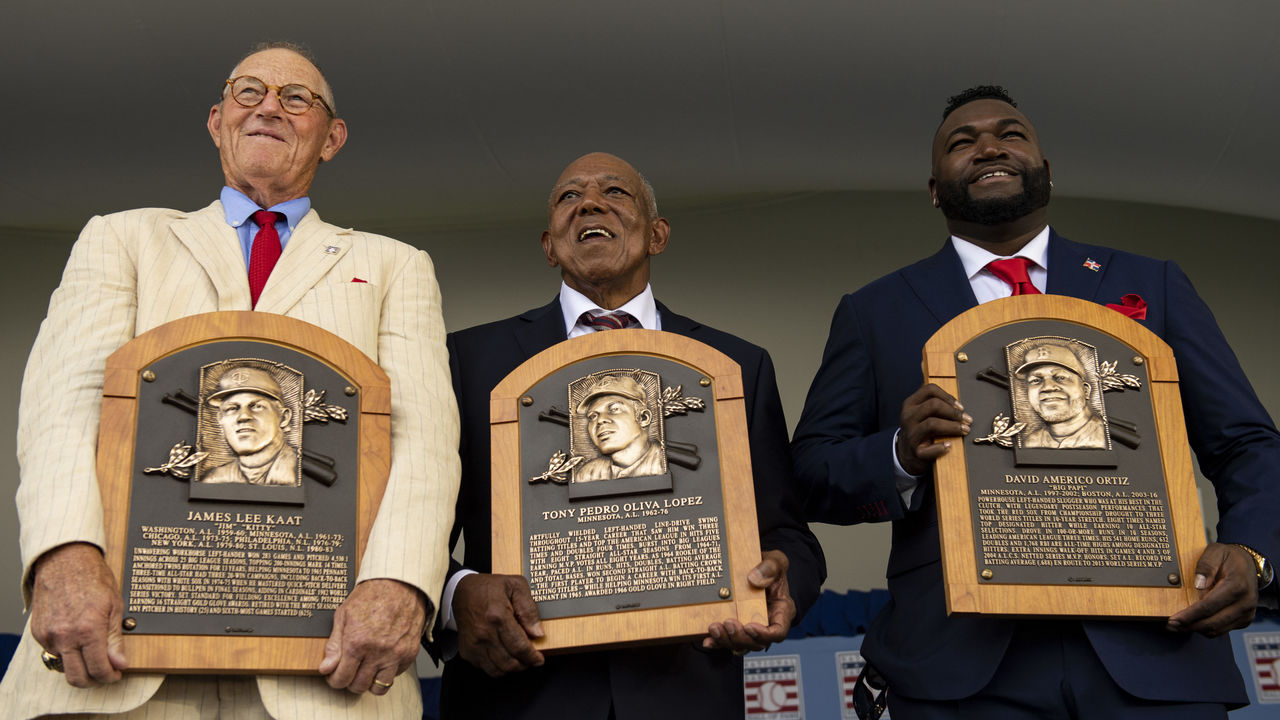
Despite claims of those who believe the Hall is becoming too large and too lax in admittance standards, the percentage of modern players in the Hall of Fame is actually declining.
In each decade beginning with the 1970s, players have been elected at a rate less than the historical average. The modern player is underrepresented. Only three players have been voted in over the last three classes, though the 2018 and 2019 classes were larger. If anything, voters ought to err on the side of selecting more players - not fewer.
This is in part because of steroid cases (more on them later), but also because of how pitcher usage has changed. Voters once leaned on benchmarks like 300 wins for pitchers, and 3,000 hits for batters, and some still do. But those counting-stat thresholds are increasingly difficult to reach. So, the modern voter must consider new measurements and criteria as a basis of decision-making in order to maintain the Hall of Fame induction rate of 1.5% of all players, which I think should be a guide. If not, the Hall is going to become more exclusive. Voters are starting to pivot, but must pivot faster to new evaluation tools.
A methodology
To respect precedent but also adapt to how the game has changed, I decided upon an approach of analyzing the Hall of Fame group like any other cohort: with a bell-shaped curve or normal distribution analysis.
I wanted to understand which individual candidates on this ballot fell within one standard deviation of the average Hall of Fame performance at their primary positions by a handful of performance measures.
Basically, what I was trying to answer was this: Do they fit in the group?
(I debated whether to compare players on the ballot to the top 1.5% to ever play the game, but settled on comparing them to those players in the Hall of Fame who had a complete historical performance record.)
I began with career WAR and peak WAR (also called WAR7, which is the sum of the player's top seven seasons) found at Baseball Reference. For me, a player's best seven seasons are as important as his total work. Late-career counting stats accumulation, when a player may no longer be league average, ought to be discounted. I weighed WAR and WAR7 equally, which is similar to Jay Jaffe's JAWS metric.
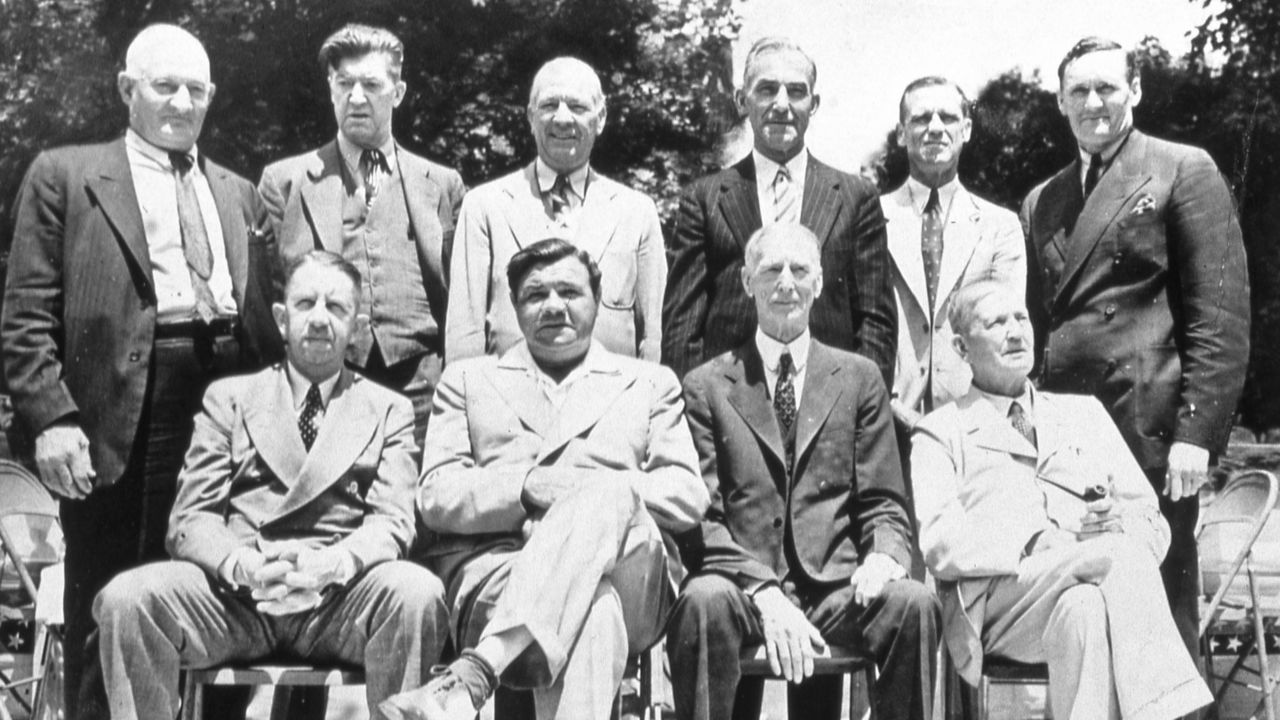
WAR also adjusts for positional value. The Hall is big on positional diversity as seen among its membership. In the Hall, there are 84 pitchers (including eight relievers), 19 catchers, 26 first basemen, 20 second basemen, 17 third baseman, 26 shortstops, 23 left fielders, 24 center fielders, and 27 right fielders.
For pitchers, I also considered Jaffe's S-JAWS metric, which adjusts for pitching performance of the 19th and early 20th century when pitchers accounted for more volume.
Finally, I also examined ERA+ and OPS+, useful measures to compare per-inning or plate-appearance performance across eras because it adjusts for ballparks and scoring environment.
As a general rule, if a player is 20% or better than his peers for his career in these metrics, that's an elite mark.
There are 356 players all time who have posted a 120 OPS+ or better and made at least 4,000 plate appearances. There are 129 pitchers to post an ERA+ of 120 with at least 1,000 innings pitched.
If one fits neatly within the population of the existing Hall of Fame players in all these measures, that makes him a no-doubt Hall of Famer for me.
Not all Hall of Famers rank within one standard deviation of the mean in all of these categories, but most enshrined rank within the population of multiple categories. If a player fits within most categories but not all, that means more debate and nuance may be needed.
So, who were the players on this ballot who finished within a standard deviation in all respective categories compared to Hall of Famers at their primary positions?
There are nine, which this year nearly fills out a ballot if including no other considerations:
- Bobby Abreu
- Carlos Beltran
- Todd Helton
- Jeff Kent
- Scott Rolen
- Manny Ramirez
- Alex Rodriguez
- Gary Sheffield
- Billy Wagner
All of the aforementioned hitters fit within one standard deviation of WAR, WAR7, and OPS+ compared to Hall of Famers at their respective positions. And Wagner was the only pitcher on the list to rank within a standard deviation of his bullpen peers.
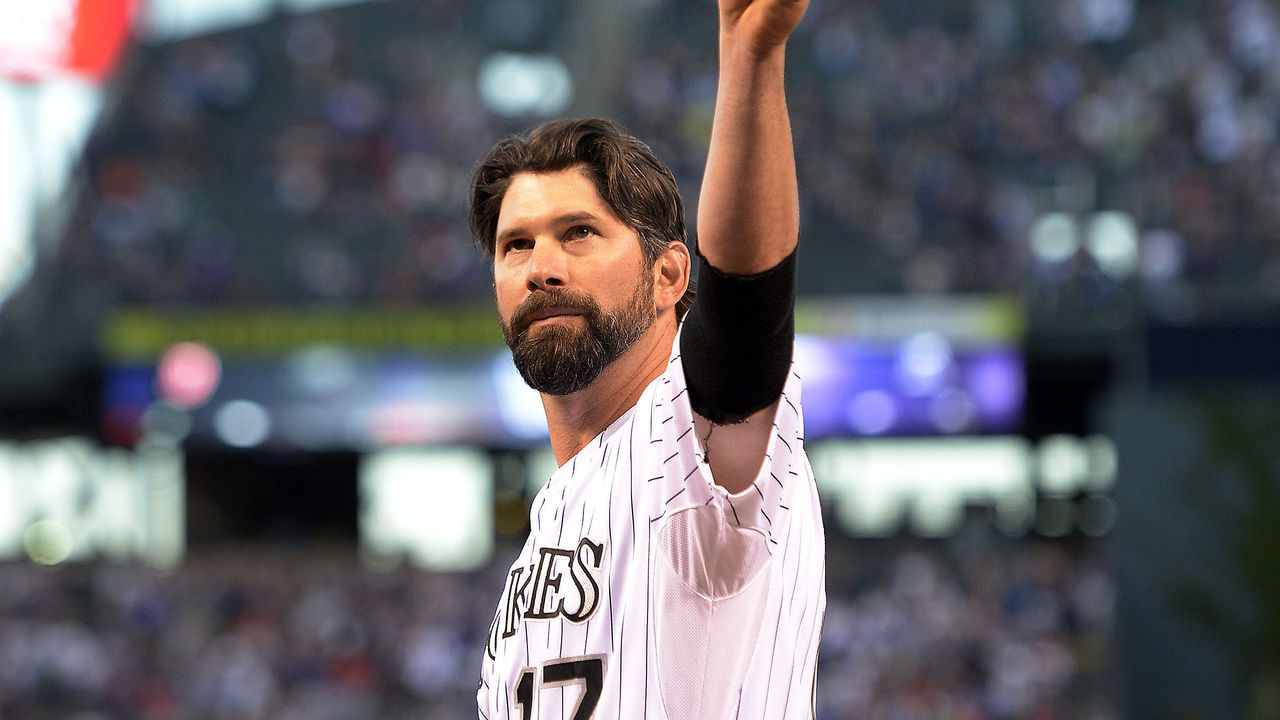
I voted for one other player, Andruw Jones, who fit in two of three metrics but not all, similar to the cases of pitchers Andy Pettitte and Mark Buehrle who didn't make my cut.
Jones was above the Hall of Fame average for center fielders' WAR7 peaks, whereas Pettitte and Buehrle were not above the Hall average in any such category.
Jones also could make a case that he was the best player in the NL in 2005, when he led the league in home runs, RBIs, and FanGraphs WAR, in addition to reeling in one of his 10 Gold Gloves. Jones' elite defense helps overcome any offensive shortcomings among the Hall cohort. Pettitte and Buehrle's best years were never considered best-in-league.
Another bubble case: Jimmy Rollins. He fell outside of one standard deviation among shortstops in the Hall in WAR, WAR7, and OPS+. Rollins was an excellent defender but not enough to overcome being a below-average hitter for his career (95 OPS+).
Bobby Abreu and Jeff Kent?
Let's consider a couple of players I voted for but who are not appearing on the majority of known ballots at this point: Bobby Abreu and Jeff Kent.
Abreu is within one standard deviation of the mean among Hall of Fame right fielders in career WAR, WAR7, and OPS+.
In fact, he ranks 19th among right fielders all time in WAR and 16th in WAR7. He was 28% better than the league-average hitter for his career (128 OPS+).
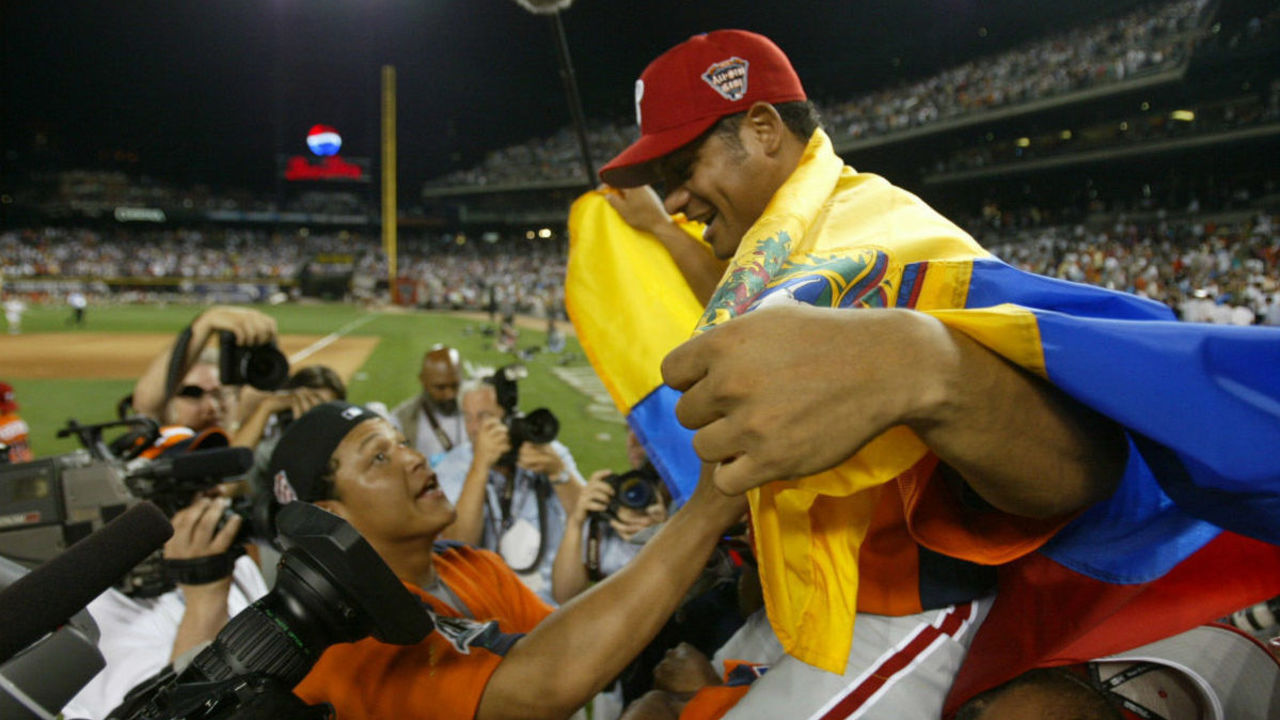
From 1998 to 2010, no MLB right fielder produced more WAR than Abreu. Only Larry Walker produced a better on-base percentage, and only Ichiro Suzuki stole more bases during that time among at the position. Abreu was well-rounded, too, hitting 288 career home runs and stealing 400 bases, one of six players to reach such thresholds in his career.
That seems pretty Hall of Fame-ish for me.
Yet he received only one top-10 MVP vote in his career because of how he accumulated value, a large part of it derived from on-base skills. He finished with a .395 career on-base mark. "Moneyball" was published just as his peak was winding down in 2003.
Kent had an unusual career with nearly all his production coming after age 28.
Yet he easily outpaced all MLB second baseman in WAR from 1997 to 2005, and finished within one standard deviation of Hall of Fame second basemen in career WAR, WAR7, and OPS+. He had five seasons of 4.0 or more WAR, an All-Star level; two 7.0+ WAR seasons; and even won an MVP award. Like Jones, if Kent wasn't the best player in the game at his position during his peak, he was close.
How can you vote for the steroid guys!?!
I wrestled with this question for years before I had a vote, but more and more, I don't believe the BBWAA should play the role of moral policeman regarding steroids.
If we examine precedent, there are almost certainly steroid users in the Hall, and the commissioner who oversaw the era, Bud Selig, has a plaque in Cooperstown.
I also doubt there is a deterrence effect if a player isn't admitted. If a player elects to use PEDs, is he really thinking about his Cooperstown chances?
Moreover, MLB and the Hall have already set a policy for ineligibility: if a player fails three PED tests, he is placed on the ineligible list.
Steroids are a black-and-white issue for many. For me, it's a gray area.
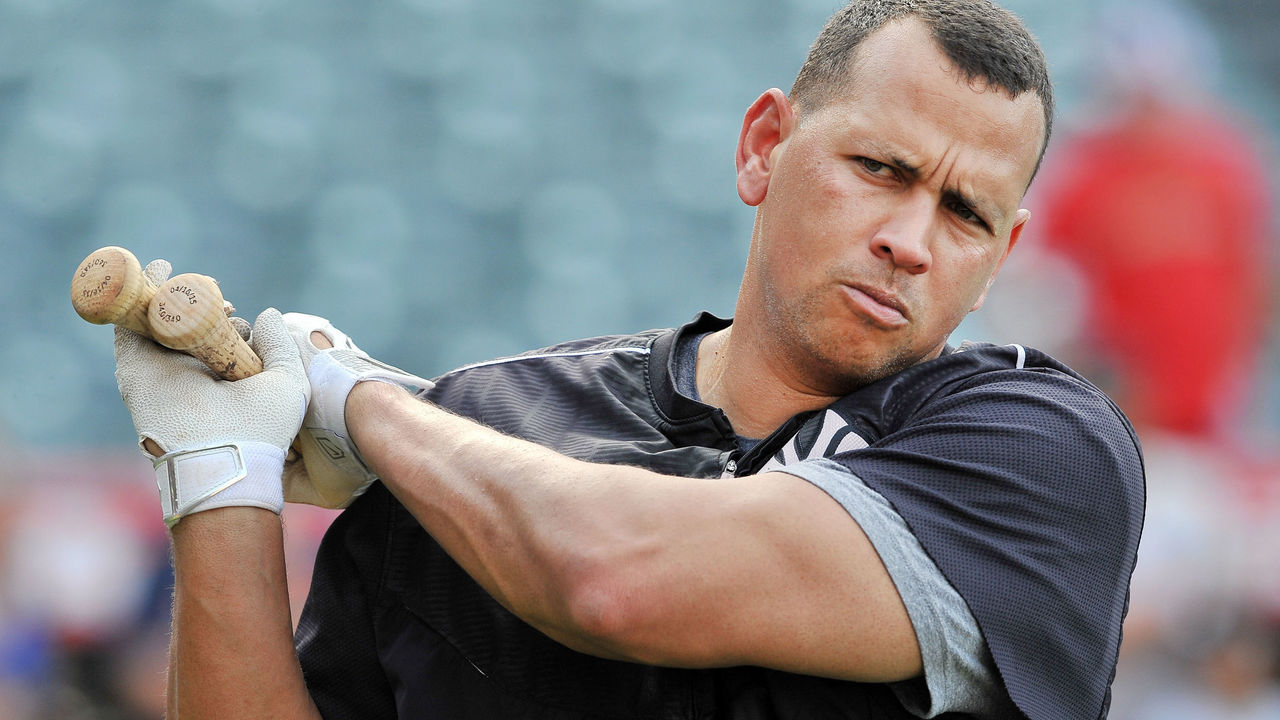
I've come up with an imperfect method: discounting performance. If a player fails a PED test, I discount his career performance by 10%. That still allows great performers with failed tests to get a pass (Alex Rodriguez and Manny Ramirez), but a fringe candidate whose PED use might have helped him exceed benchmarks doesn't get in.
As for cheating in the case of Carlos Beltran and his role in the Astros' sign-stealing saga, players have stolen signs throughout history - just not as brazenly as Beltran and the Astros did. I thought MLB should have disciplined the players involved, but there is no precedent of a sign-stealer being banned from the Hall.
Perhaps there's no right or wrong way to vote - although blank ballots are indefensible - but I believe we are obligated to be guided by evidence and logic, to have a process, and to try and be less wrong each year.
Travis Sawchik is theScore's senior baseball writer